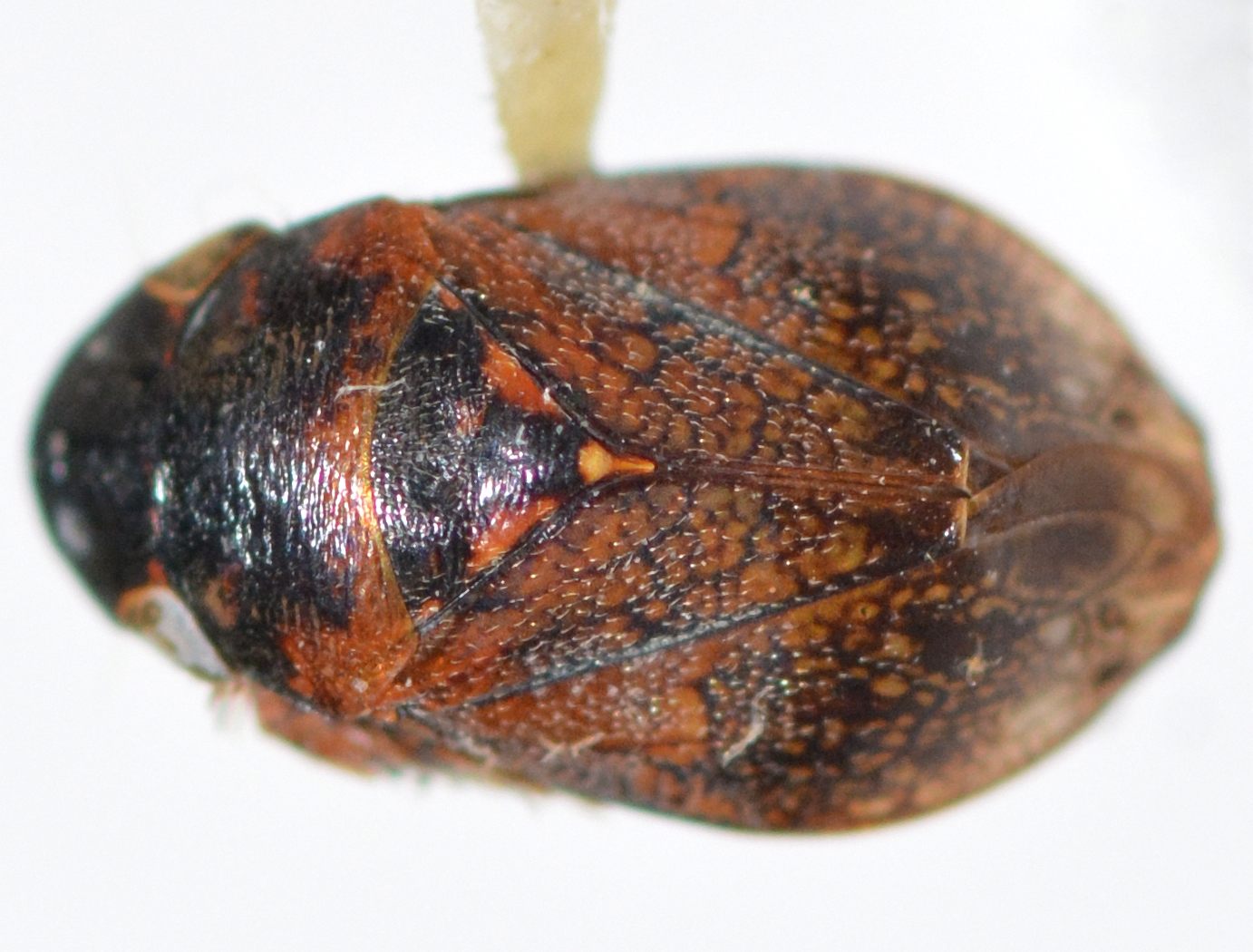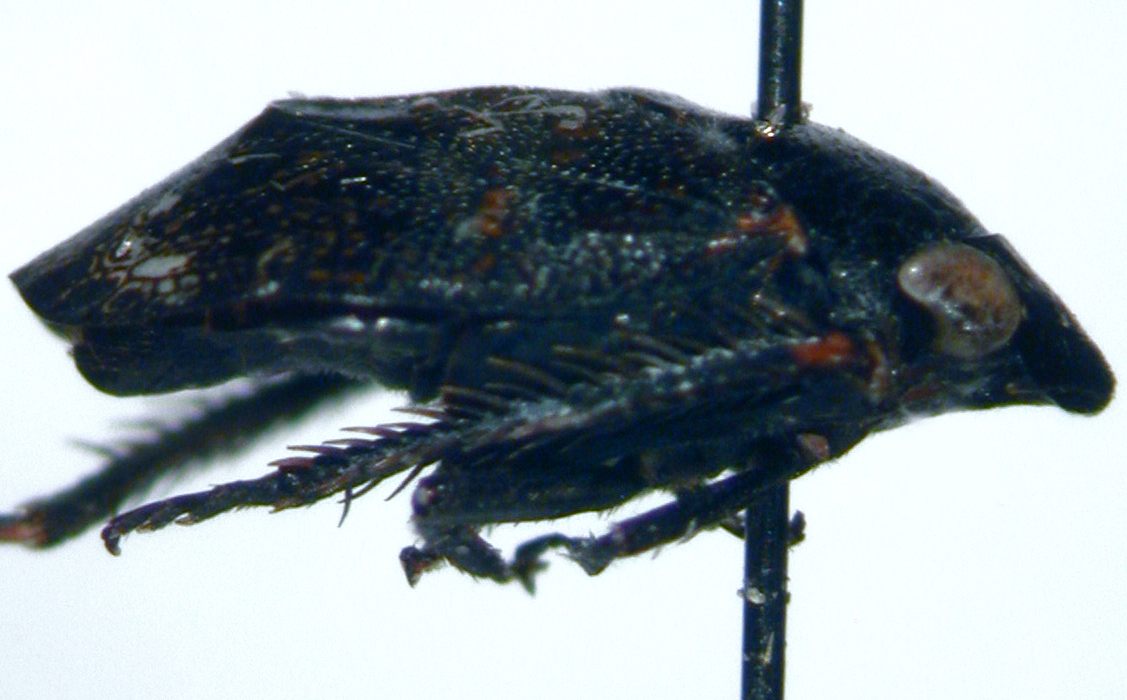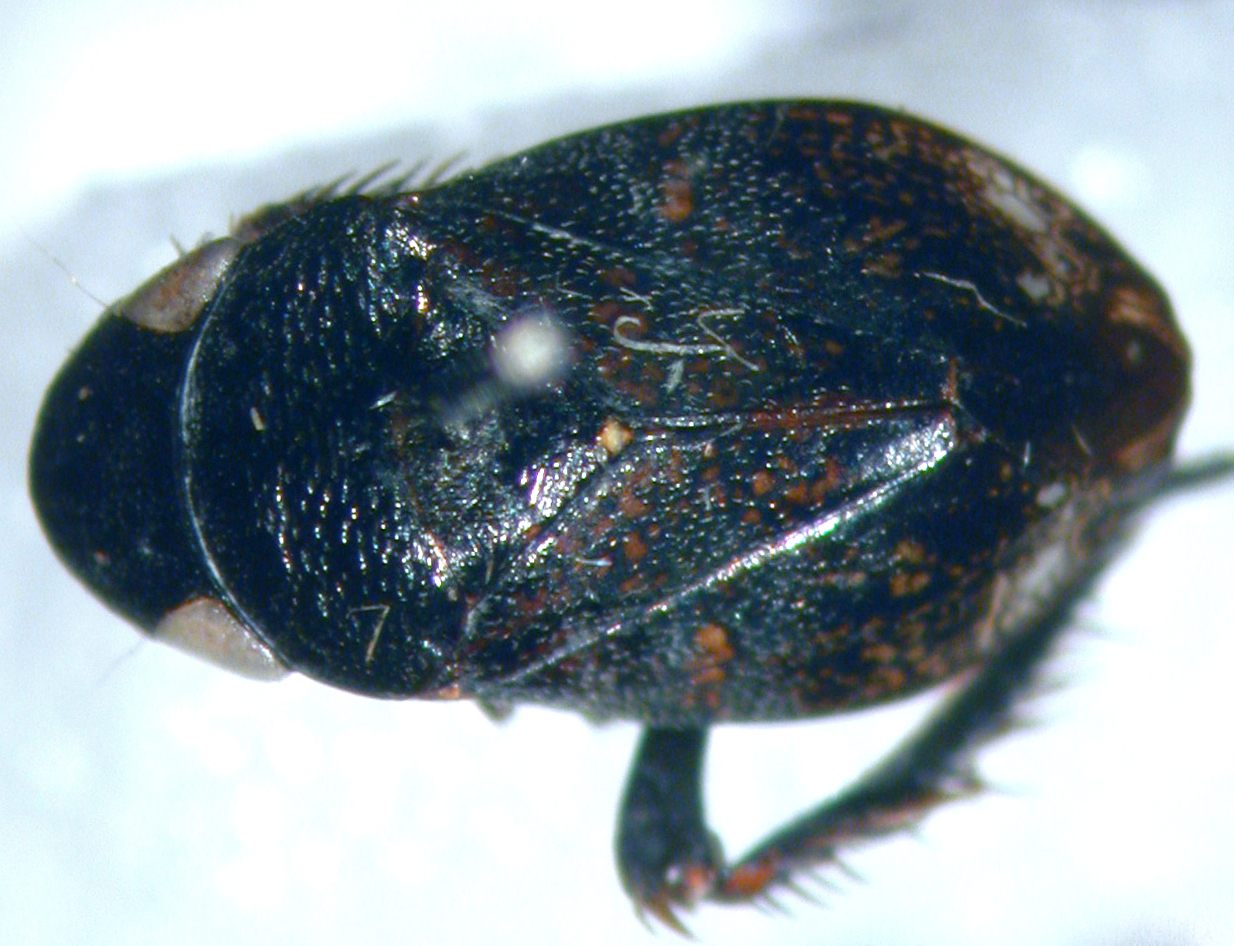
|
|
|
| synonym |
|
| description |
A somewhat dark species, ranging from reddish brown to black, with a rounded body profile. Males are darker than females, which tend to be orange rather than blackish. The apical cells of the wings are hyaline. The vertex is broadly rounded and is around two-thirds as long as the basal width between the eyes. Notably, the vertex is strongly produced, projecting well past the eyes (when viewed from the side). Dorsally, the head is long and somewhat triangular in shape with a rounded apex. The female pregenital sternite has the posterior margin shallowly excavated on either side of a short median truncate process. Male subgenital plates are broad and triangular. Adults are 4.5-5.0 mm long. (DeLong 1942)
Nymphs are orange with the characteristic produced head profile of the adults. |
| distribution |
Southeastern United States, found primarily in Florida and Georgia; it was described from Florida. This species is rarely encountered. |
| abundance |
Uncommon; recorded from several counties in the Coastal Plain and Piedmont, but no recent records. |
| seasonal_occurrence | |
| habitat |
|
| plant associates |
|
| behavior |
|
| comments |
NOTE: This genus is very unique among the leafhoppers in the area, as it does not look like a typical leafhopper and instead resembles a spittlebug (in particular Clastoptera). However, note that there are spines on the sides of the legs, which spittlebugs lack.
This species is very similar to P. americana but can be distinguished several ways. Penthimia floridana is a smaller species than americana, being 4.5-5.0 mm long compared to 5.0-6.0 mm, respectively. The pregenital sternite of floridana is also not as long as that of americana. Most notably though, floridana has a much longer and differently-shaped head compared to americana: it noticeably extends past the eyes in floridana, which is not the case in americana. Furthermore, the head of floridana is more triangular in shape, prominently extending past the eyes in dorsal view; in americana, the head is shorter and more of a blockish, pentagonal-shape. |
status |
[Native:]
[Introduced:]
[Extirpated:] | | list_type |
[Official:]
[Provisional:] |
| adult_id | Unmistakable and widely known Identifiable from good quality photos of unworn specimens
Identifiable from photos showing undersides, or other specialized views [e.g., legs, face]
Identifiable only by close inspection of structural features or by DNA analysis NULL |
| nymph_id | Unmistakable and widely known Identifiable from good quality photos, especially where associated with known host plants
Identifiable from close inspection of specimens or by DNA analysis
Identifiable only through rearing to adulthood NULL |
| G_rank |
|
| S_rank |
|
| rank_comments |
|
| tribe |
Penthimiini |
| subgenus |
|
Species Photo Gallery for Penthimia floridana No Common Name |
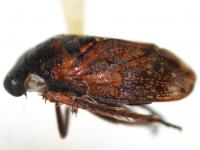 | Photo by: Kyle Kittelberger
Out Of State Co.
Comment: NCSU specimens; male | 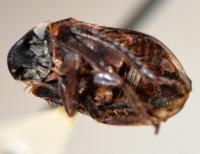 | Photo by: Kyle Kittelberger
Out Of State Co.
Comment: NCSU specimens; male |
 | Photo by: Kyle Kittelberger
Out Of State Co.
Comment: NCSU specimens; male | 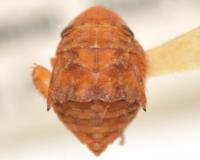 | Photo by: Kyle Kittelberger
Out Of State Co.
Comment: NCSU specimens; nymph |
 | Photo by: Scott Bolick
Pender Co.
Comment: | 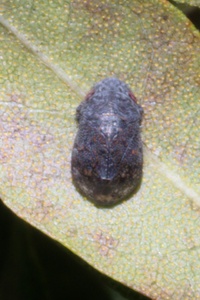 | Photo by: Scott Bolick
Pender Co.
Comment: |
 | Photo by: Scott Bolick
Pender Co.
Comment: |  | Photo by: Bo Sullivan
Carteret Co.
Comment: male |
 | Photo by: Bo Sullivan
Carteret Co.
Comment: male |  | Photo by: Bo Sullivan
Carteret Co.
Comment: male |
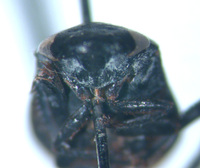 | Photo by: Bo Sullivan
Carteret Co.
Comment: male |  | Photo by: Bo Sullivan
Carteret Co.
Comment: male |
 | Photo by: Bo Sullivan
Carteret Co.
Comment: male | 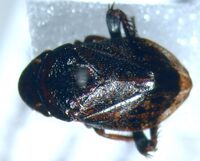 | Photo by: Bo Sullivan
Carteret Co.
Comment: male |
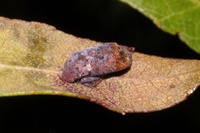 | Photo by: Scott Bolick
Pender Co.
Comment: | 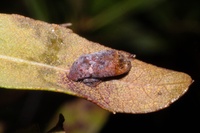 | Photo by: Scott Bolick
Pender Co.
Comment: |
|

 »
»
